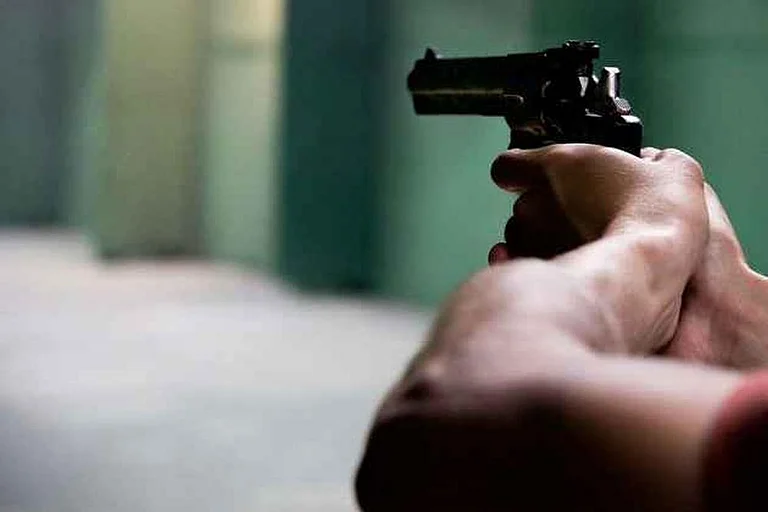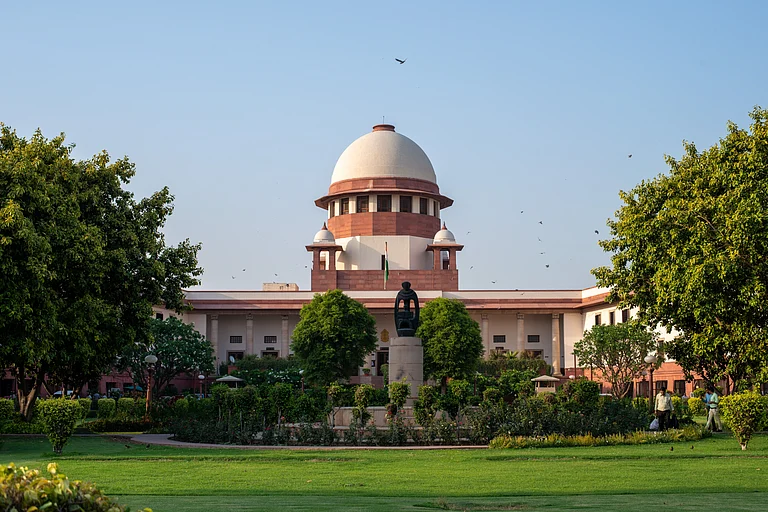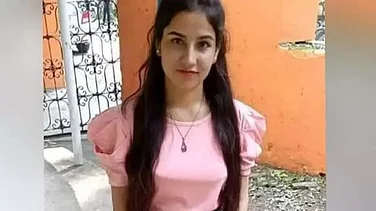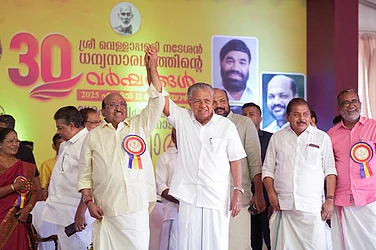A Rajasthan court has accepted a petition claiming that the Ajmer Sharif Dargah, the revered shrine of Sufi saint Moinuddin Chishti, is actually a Shiva temple. The petition, filed by Vishnu Gupta, chief of the Hindu Sena, requests the court to permit worship at the site once again. In response, the court has issued notices to the Archaeological Survey of India, the Ministry of Minority Affairs, and the Ajmer Dargah Committee.
The petition comes as the situation in Uttar Pradesh’s Sambhal remains tense after violent clashes over a centuries-old mosque led to the deaths of four people and left dozens injured on Sunday. The clashes erupted between protesters and police during a survey of the Shahi Jama Masjid, a 16th-century monument. Social media was flooded with videos and images showing slippers, bricks, and stones scattered around the mosque premises.
Uneasy peace prevailed in the troubled area on Monday morning after the district administration imposed prohibitory orders barring entry of outsiders till November 30. Additionally, internet services were soon suspended in Sambhal tehsil for 24 hours and the district administration declared a holiday in all schools for Monday.
Also Read | Another Mosque, Another Temple
The survey, ordered by a local court last week, followed a petition claiming the mosque had been constructed on the site of a destroyed temple. The petition alleged that Mughal ruler Babur demolished the Hari Har temple in the 1520s to build the mosque. It described Sambhal as a historical city with strong connections to Hindu scriptures, which prophesy it as the birthplace of Kalki, an incarnation of the Hindu god Vishnu.
Muslim groups, however, have questioned the urgency of the court's directive to conduct the survey. The next hearing in the case is scheduled for January 29.
Over the years, many such petitions have been filed and surveys have been conducted with many mosques under scrutiny. A pattern has been observed of right-wing Hindu groups claiming that Mughal rulers destroyed temples to build mosques. Muslim groups are currently fighting several legal cases on these issues in courts across the country.
As incidents of this nature have increased, the effectiveness of the Places of Worship Act has also come under question. Introduced in 1991 to prevent the kind of communal flare-ups seen during the Ram Janmabhoomi movement, the Act was designed to preserve the status quo of religious sites as they stood on August 15, 1947, and to maintain their religious character. In Outlook's October 2022 magazine issue titled, 'Ayodhya to Hubballi, via Kashi and Mathura', lawyer Arindan Bharadwaj wrote about the contradictions and ambiguity of the Places of Worship Act which, on many counts, rendered it inefficacious.
While for the same issue, reporter Rakhi Bose in her story, listed the many instances of "communal one-upmanship", from Gyanvapi to Hubballi.
Outlook looks at the many Mandir vs Masjid disputes that have made headlines:
Jama Masjid Shamsi
Located in Badaun city, Uttar Pradesh, Jama Masjid Shamsi stands on an elevated area called Sotha Mohalla and is regarded as the tallest structure in the town. The mosque, considered the third oldest existing and the seventh largest in India, has a capacity to accommodate 23,500 people.
In 2022, a plea was filed in a Badaun court, claiming that Jama Masjid Shamsi is actually a temple dedicated to the Hindu god Shiva. The petition sought permission for Sanatan Dharma followers to offer prayers at the site. The petitioners, including Akhil Bharat Hindu Mahasabha state convenor Mukesh Patel and advocates Arvind Parmar, Gyan Prakash, Anurag Sharma, and Umesh Chandra Sharma, argued that the structure is the Neelkanth Mahadev temple, originally located within the fort of Raja Mahipal.
Shahi Eidgah Mosque
In Mathura, Uttar Pradesh, the Shahi Eidgah mosque, built by Mughal emperor Aurangzeb in 1670, is the subject of 12 lawsuits alleging that it was constructed on the birthplace of Hindu god Lord Krishna and over the ruins of a Hindu temple.
The petitioners argue the mosque is located within the Katra Keshav Dev Temple complex, near Krishna Janmabhoomi, and have sought its removal. They claim the mosque includes features like a lotus-shaped pillar, characteristic of Hindu temples.
The defendants, including the Shahi Eidgah mosque committee and the UP Sunni Central Waqf Board, deny these claims, stating that the mosque is not within the 13.37-acre Katra Keshav Dev land. They also dismiss the petitioners' claims about Krishna's birthplace being beneath the mosque. While Muslims are contesting the case, some Hindus in Mathura, a city known for its history of communal harmony, have also voiced opposition to the dispute.
Kamal Maula Mosque
The Bhojshala-Kamal Maula mosque complex in Dhar, Madhya Pradesh, is claimed by both Hindus and Muslims. Hindus claim the site is the 11th-century Vagdevi temple dedicated to Goddess Saraswati. They refer to yantras, Sanskrit and Pali inscriptions, images of gods and goddesses on pillars, and a large "havan kund" as evidence. Muslims claim the site is the Kamal Maula mosque.
The Archaeological Survey of India (ASI) controls the structure and allows Hindus to pray on Tuesdays and during Basant Panchami, while Muslims are allowed to offer prayers on Fridays. Tensions arise when Basant Panchami coincides with a Friday, allowing both groups access to the structure and causing unrest in Dhar town and surrounding areas.
Gyanvapi-Kashi Vishwanath Temple
The Gyanvapi mosque in Varanasi, Uttar Pradesh, has been disputed since 1991 when a petition was filed on behalf of three Hindu deities—Shiva, Shringar Gauri, and Ganesha—seeking the restoration of Gyanvapi land to the Kashi Vishwanath temple, removal of Muslims from the complex, and the demolition of the mosque.
In May 2022, Hindu litigants claimed that an oval-shaped object found on the mosque premises was a 'shivling', a representation of Hindu God Shiva. The mosque’s caretaker committee stated that the object was a defunct fountainhead in the wazu khana, or ablution tank. In January 2024, the Varanasi district court allowed Hindus to offer prayers in the basement of the complex after an Archaeological Survey of India report stated that a Hindu temple existed at the site and was destroyed in the 17th century.
Teele Wali Masjid
The Teele Wali Masjid in Lucknow, Uttar Pradesh, is claimed by Hindu litigants to be the site of "Lakshman Teela," constructed by Lakshman, the younger brother of Lord Ram. In 2013, a Hindu party filed a suit claiming that the original Hindu structure was demolished during Aurangzeb’s reign to construct the mosque. The suit seeks the restoration of the Hindu religious structure.
Srirangapatna Jamia Masjid
The Srirangapatna Jamia Masjid in Karnataka was built during the reign of Tipu Sultan and is maintained by the Archaeological Survey of India (ASI), which recognises it as a historical monument. Some Hindu groups claim the mosque was originally a temple converted by Tipu Sultan. The 1935 Annual Report of the Mysore Archaeological Department mentions that the mosque’s granite pillars have Hindu motifs, and the Hoysala empire emblem is present.
The Central government has asked the Karnataka High Court to direct the Mandya district administration to halt madrasa activities in the mosque. This request was made in response to a public interest litigation filed by Abhishek Gowda, who alleged unauthorised madrasa activities at the site.



























